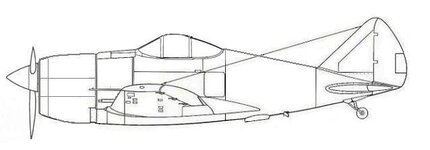GrauGeist
Generalfeldmarschall zur Luftschiff Abteilung
Now, now...I really don't see what all the fuss is about.Joe, do I have to explain the intricacies of aircraft mechanisms again?
It's all very straight-forward...
Follow along with the video below to see how to install our site as a web app on your home screen.
Note: This feature may not be available in some browsers.
Ad: This forum contains affiliate links to products on Amazon and eBay. More information in Terms and rules
Now, now...I really don't see what all the fuss is about.Joe, do I have to explain the intricacies of aircraft mechanisms again?
What da' heck izzat?Now, now...I really don't see what all the fuss is about.
It's all very straight-forward...
View attachment 658034
lmao...What da' heck izzat?
Nope.Are you sitting, Dave? That was my guess. Fokker Eindekker?
Joe, do I have to explain the intricacies of aircraft mechanisms again?
The four engined aircraft had a hand pump and a flight engineer to provide hydraulic system redundancy.Yup, it's interesting having maintained modern airliners, then reading through operating manuals for WW2 aircraft and seeing one engine driven hydraulic pump on a four-engined aircraft...
#5 via paper design
#5 via paper design of the Byelyayev OI-2, inspired by the LL'ed P-39

The four engined aircraft had a hand pump and a flight engineer to provide hydraulic system redundancy.
Double#5 via paper design
View attachment 658905
View attachment 658904 of the Byelyayev OI-2, inspired by the LL'ed P-39
Well, this might have done the trick. Same time frame as P-38.
View attachment 659015View attachment 659016
The thing that is tantalizing about the Supermarine design is the twin merlin power plants. To me, it looks like the Hornet, just a few years sooner.A no-nonsense fighter with two non-turbo* V-1710s in 'classic' layout (ie. along the lines of Whirlwind, Type 327, Fw-187 and later DH Hornet) might've been a valuable asset. We'd probably have 370+ mph at 15000 ft even with the -33 engines if the aircraft's size is kept modest, at least when looking at what Ro.58 or Whirly were capable for.
(P-38D and E were doing ~375 mph, but at 20000 ft)
*yes, USAAC/AAF was hell bent on the idea that new fighters have to have turbochargers
Cool design, Tomo! A few little things I noticed are the use of the actual P-38 canopy shape but changed to a sliding (or is it side-hinged?) three-piece affair. Also, it appears you used Republic wings--I wonder if adapting the 23016-to-4412 trapezoidal wings as used on the real P-38 would be more fitting? Johnson was the primary wing-designer for Lockheed by this time which is why you see variations of the same (or at least similar) wings on the L-10/12 Electras, the L-14 Hudson, the L-22 Atalanta (XP-38), the paper-only L-133, and even the early XP-80 if memory serves.Welcome to the asylum
View attachment 658986
Alternative early YP-38 that never existed. Still with the big spinner in front of the R-2600; two 23mm Madsen cannons and two HMGs. 275 sq ft wing area.
Cooling problems led to the replacement of the big spinner with smaller one, armament was changed to 6 .50 BMGs in late 1940 for the series production. The P-38A (early 1941) was powered by the R-2600-9 engine (in conjunction with turbo), de-rated to 2500 rpm and 1600 HP (instead of 2600 HP and 1700 HP as on the B-25) to keep the head temperature in check even on summer. 300 gals of fuel, with P-38B the s-s tanks reduced the fuel load to 250 gals. Capable for a tad over 390 mph at 25000 ft.
Cool design, Tomo! A few little things I noticed are the use of the actual P-38 canopy shape but changed to a sliding (or is it side-hinged?) three-piece affair. Also, it appears you used Republic wings--I wonder if adapting the 23016-to-4412 trapezoidal wings as used on the real P-38 would be more fitting? Johnson was the primary wing-designer for Lockheed by this time which is why you see variations of the same (or at least similar) wings on the L-10/12 Electras, the L-14 Hudson, the L-22 Atalanta (XP-38), the paper-only L-133, and even the early XP-80 if memory serves.